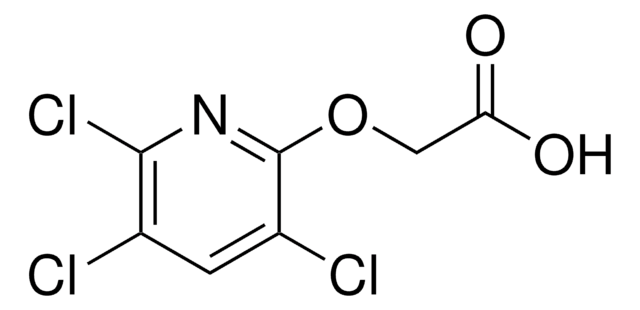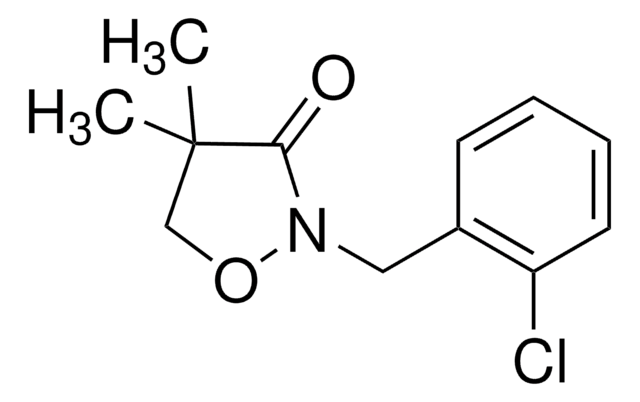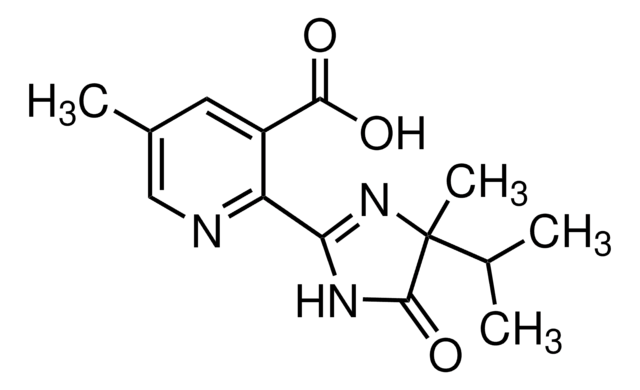36774
Picloram
PESTANAL®, analytical standard
Synonym(s):
4-Amino-3,5,6-trichloropyridine-2-carboxylic acid, 4-Amino-3,5,6-trichloropicolinic acid, Picloram
About This Item
Recommended Products
grade
analytical standard
Quality Level
product line
PESTANAL®
shelf life
limited shelf life, expiry date on the label
mp
200 °C (dec.) (lit.)
application(s)
agriculture
environmental
format
neat
SMILES string
Nc1c(Cl)c(Cl)nc(C(O)=O)c1Cl
InChI
1S/C6H3Cl3N2O2/c7-1-3(10)2(8)5(9)11-4(1)6(12)13/h(H2,10,11)(H,12,13)
InChI key
NQQVFXUMIDALNH-UHFFFAOYSA-N
Looking for similar products? Visit Product Comparison Guide
Application
- Herbicide Research: Picloram is explored for its synthesis, bioactivity, and mechanism of action as a herbicide in a novel compound class, showing its efficacy and potential applications in agriculture (Liu et al., 2024).
- Environmental Impact Studies: Research focuses on long-term conservation efforts using Picloram, demonstrating its effectiveness in ex situ plant conservation and understanding its broader environmental impacts (Kocot et al., 2024).
- Molecular Biology: Studies on the fluorescence sensor array for herbicides including Picloram highlight advancements in analytical chemistry, providing a robust method for qualitative and quantitative herbicide analysis (Zhang et al., 2024).
- Pharmacological Properties: The development and validation of methods for analyzing formulations containing Picloram showcase its stable nature and relevance in ensuring the safety and effectiveness of herbicidal products (Marczewska et al., 2024).
- Plant Growth Regulator Studies: Picloram′s role in the synthesis and herbicidal activity of novel compounds supports ongoing research into its use as a plant growth regulator, enhancing our understanding of its molecular effects on plant biology (Liu et al., 2024).
Legal Information
hcodes
pcodes
Hazard Classifications
Aquatic Chronic 3
Storage Class
11 - Combustible Solids
wgk_germany
WGK 2
flash_point_f
Not applicable
flash_point_c
Not applicable
ppe
dust mask type N95 (US), Eyeshields, Gloves
Choose from one of the most recent versions:
Certificates of Analysis (COA)
Don't see the Right Version?
If you require a particular version, you can look up a specific certificate by the Lot or Batch number.
Already Own This Product?
Find documentation for the products that you have recently purchased in the Document Library.
Customers Also Viewed
Our team of scientists has experience in all areas of research including Life Science, Material Science, Chemical Synthesis, Chromatography, Analytical and many others.
Contact Technical Service














